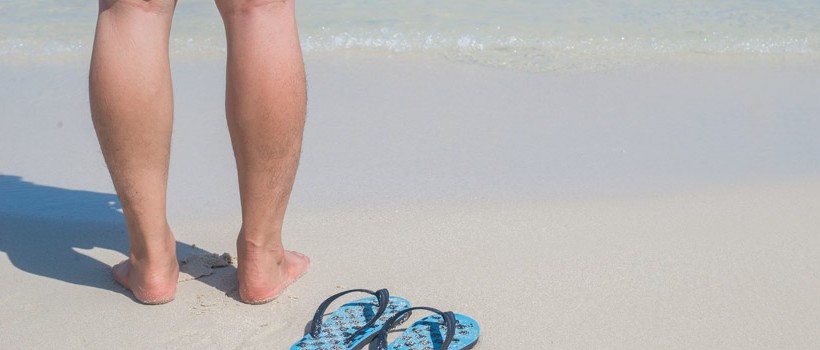How can Leg Veins be treated by LASER?
The LASER treatment of veins involves the use of a special beam of light of a particular wavelength which can be concentrated inside a vein to specifically heat and then destroy the vein. Laser treatment of Leg Veins can either be applied externally on to the surface of the skin, when it is called Surface Laser Treatment, or applied internally through a catheter inserted into the skin to target deeper Varicose Veins, when it is called EndoVenous Laser Ablation (EVLA).
When are Surface Lasers used to treat Veins?
Medical grade Lasers are the best treatment for facial veins and capillaries and there are a variety of what are called Vascular Lasers that are very effective for this application. These Vascular Lasers can also be used to treat veins on other body areas including the Legs. However, Leg Veins do not generally respond as well to surface laser treatment as facial veins. The reason for this is that surface Leg Veins are more difficult to heat up and seal off because Leg Veins are thicker walled, deeper below the surface of the skin and are often associated with larger feeder veins. For these reasons Surface Laser treatment works most effectively on the very smallest of Leg Veins.
What sort of Laser is used?
At the Cosmetic & Laser Medical Centre we have several Vascular Lasers we can use for the treatment of Leg Veins but the main laser we currently use for treating Leg Veins is the EXCEL V Laser. This Laser has the advantage of producing Laser light at both a 532 nm wavelength, which can target fine red Spider Veins, and a 1064 nm wavelength, which can target small blue Spider Veins.
Is Laser Vein treatment painful?
Lasers produce a concentrated light beam that can be felt on the skins surface. Many patients find the Laser treatment of Leg Veins uncomfortable but quite tolerable. When Leg Veins are treated by Laser, skin cooling is very important to minimise discomfort and to reduce skin reaction after treatment.
Are there side effects?
Surface Laser treatment of Leg Veins doesn’t break the surface of the skin and subsequently there is no bleeding. There may be some redness or slight burning sensation for the first few days after Surface Laser treatment. This can be relieved by treating with cold packs. Minor blistering can occur with sensitive skin and darker skintypes. Increased pigmentation due to iron from the blood can occur. This is similar to how an area of skin can go a brown colour after bruising. This typically resolves over several weeks although rarely it may be long lasting.
How many Surface Laser treatments are needed?
The number of Laser treatments required to treat Spider Veins will depend on the extent of the Spider Veins and the level of improvement sought. If any underlying leg vein problems have been treated then the small Spider Veins that are treated by Laser typically respond fairly quickly and only 2 or 3 Laser treatments might be needed in a particular area. Several Laser treatments may be needed if there are widespread areas of Spider Veins over the legs. If a further treatment is required this will usually be at least 4 weeks after the initial treatment.
Who does the treatment?
All surface Leg Vein Laser treatments are performed by experienced medical practitioners who have been fully trained in the latest Leg Vein treatment methods.
What happens after a Surface Laser treatment?
Immediately after a Surface Laser treatment the treated area usually feels like mild sunburn and a cold pack is applied for 5-10 minutes after treatment and if necessary can be repeated in the first 24 hours. A topical cream is applied immediately after treatment to soothe the skin and creams such as Aloe Vera, Vitamin E or moisturising creams can be applied in the days following treatment.
The Surface Laser treatment is a walk in walk out treatment and normal work and activities can be recommenced immediately after treatment. It is generally advised to avoid swimming or vigorous exercise for 48 hours after treatment whilst the skin is slightly sensitive.
Depending on the level of skin reaction sun exposure may need to be avoided for 1-2 weeks after a Laser treatment. It is recommended that sun tanning is avoided for 4 weeks after a Surface Laser treatment.
What are the costs?
When only very small Spider Veins are being treated these are regarded by Medicare as cosmetic and as such there is no Medicare rebate, irrespective of how the Sider Veins are treated, whether by Sclerotherapy injections, Surface Laser treatment or by Surface Radiofrequency. On any procedure without a Medicare rebate the Government will charge an additional GST of 10%. Expect to pay around $300 to $350 per session for a Surface Laser Leg Vein treatment.

